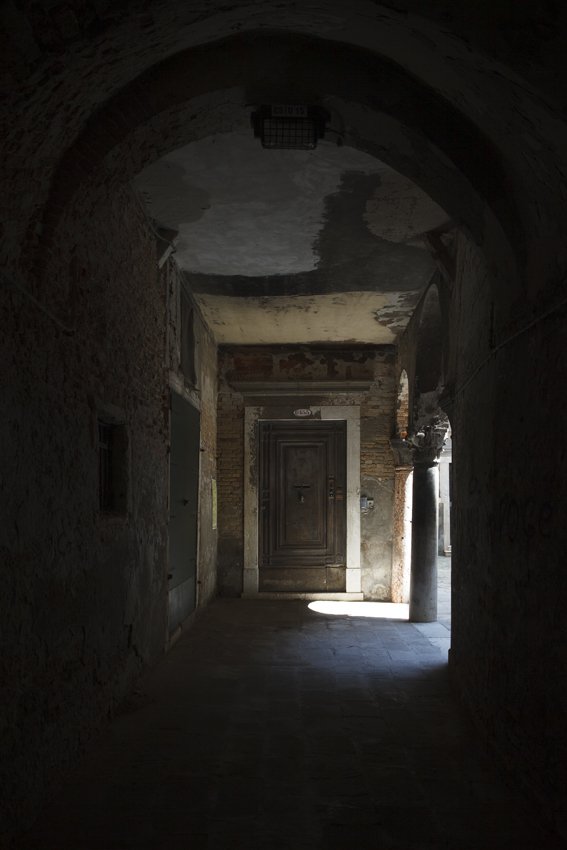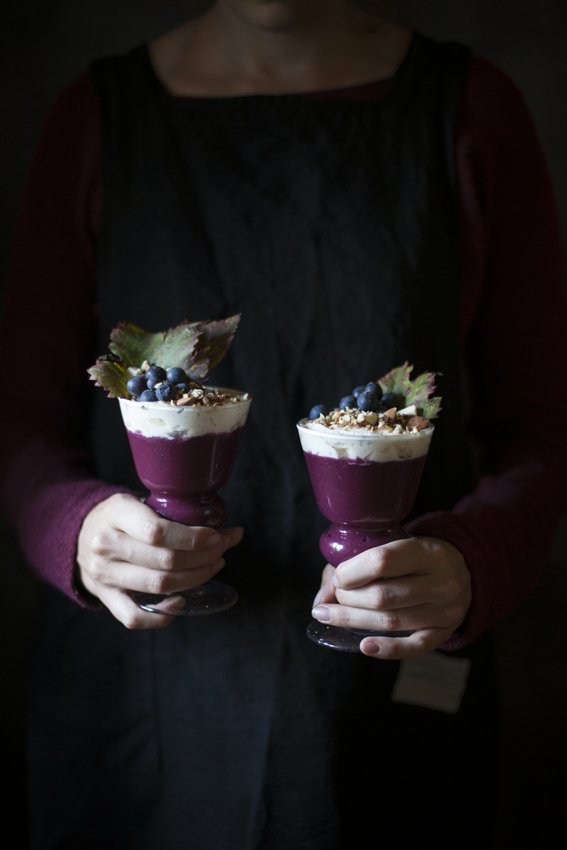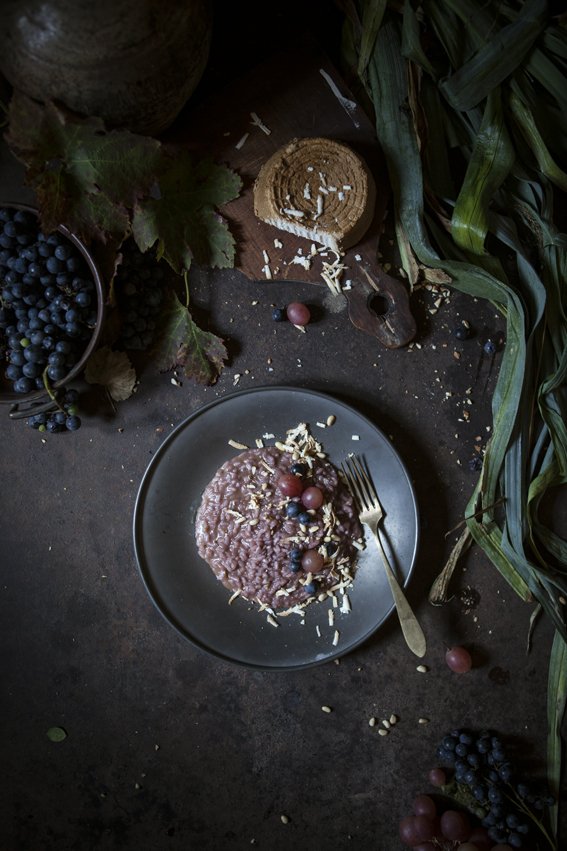Two recipes with Amedeo Modigliani’s grape
& a nostalgic glimpse of the old Academy of Fine Arts of Venice
In the 1750s the Venetian Senate granted a room, - a space - in the place where the Magistrate of Flours was located, to the young people, so that, under the guidance of the Masters, they could become familiar with the art of drawing. The Church and the School of Santa Maria della Carità, which were next to it, later became the Academy of Fine Arts of Venice.
Many were the illustrious names that crossed the great gate, today closed and visible from the homonymous Campo, a long list where we can also find a young Amedeo Modigliani. It was the year 1903.
At the entrance, a sight of a noble courtyard with a beautiful raised puteal and a herringbone floor of red bricks gave a welcome.
Just on the left, a covered area showed a large wrought iron chandelier, and four steps led to the five large rooms created as laboratories. Above these, the space that became the upper floor splitting the whole Church was the one used for the exhibitions of the works.
From the first courtyard surrounded by buildings with glass doors and windows, going ahead, you were in front of a dark sottoportico. In the half-light, there were plaster copies of Greek bas-reliefs of excellent workmanship. Then immediately, an overwhelming light reappeared from a second wider courtyard, as if it was an entire Venetian Campo paved of Istrian stone.
In front, at the bottom, there was a majestic three-tiered colonnade with brick columns alternating at the white stone of Maestro Canova (this was one side of the 16th-century convent).
In the middle of the courtyard, there was a small spontaneous garden with tall oleanders, right next to a magnificent rectangular marble basin used to clean the work tools.
Again, along the wide perimeter, small islands of bricks were used as flowerbeds for other plants. Among these, a flourishing vine, grown to become a robust pergola loaded with juicy grapes, could not remain unnoticed by the young students.
Often, it was right below the pergola where they sought the shadow and they exchanged the doubts of their Art. Among these, there was a young Modigliani, and the story goes that he was very greedy for that grape to the point that over the decades, the vine ended to took his name becoming "Modigliani's grape".
I was still a child when I got through the sacred doors of the fine arts kingdom, hand in hand with my mom, who stopped at the porter's lodge asking about Professor Zarotti to the keeper of keys.
The professor, a very young version of my father, came to the entrance after a few minutes, wearing one of those corduroy suits he had bought in Paris when he was just twenty.
I remember his dirty hands and the smell of turpentine on his jacket. I do not remember much more, but that courtyard with the Modigliani's vine under which we walked, I never forgot it.
Many years later, the historical headquarter of the Academy of Fine Arts was closed in view of a change of use, a renewal still not completely resolved yet.
Emptied and robbed of everything, including its ancient charm enriched by the stories handed down by the passage of some of the most famous artists in the world, the Academy saw its doors close for a long time and the Modigliani's vine weakened until it disappears.
Decades later, stories of large boats loaded with old trestles and stools stained with layers and layers of oil colors headed to the landfill of Venice reached out to my ears, along with those of a not so longer young Professor Zarotti, who saved a root of the Modigliani's vine by putting it in the pocket of his jacket.
True stories can be manipulated as often happens in the Venetian tradition which tends to lengthen them by imitating the tail of the lion of San Marco (just look at it, is out of all proportion!).
However, they also can be passed down faithfully and not dispersed when they pass from hand to hand, or better from ear to ear, to lucky witnesses.
So that was; this story has been gathered together with some branches of the "Modigliani vine", which now it still lives and is fine in my garden.
The recipes of this post (instructions below) were made with Modigliani's grape from my garden.
For an entire menu based on grapes, read my post dedicated to a Venetian aperitif: Tiziano, a cocktail inspired by the Master of color and some roasted grape cicchetti.
Grape-based menu:
- Tiziano cocktail
- Roasted grape cicchetti with goat cheese, thyme, and balsamic vinegar
- Concord grape risotto with smoked ricotta cheese
- Sugoli, Concord grape puddings with whipped cream and salted almonds
CONCORD GRAPE RISOTTO WITH SMOKED RICOTTA CHEESE
Ingredients:
(Serves 4)
320 g risotto rice (I used Vialone Nano quality)
400 g of very ripe Concord grape
1 leek
1 glass of red wine
1 liter of organic vegetable stock
30 g Grana Padano or Parmigiano Reggiano cheese (grated)
50 g smoked sheep ricotta cheese (grated)
60 g butter
Instructions:
Wash and dry the grapes. Using a vegetable mill, get out the grapes juice and pulp and throw away peels and seeds. Keep aside.
Heat the vegetable stock in a saucepan.
Wash and clean the leek. Slice the white part thinly and place half of the butter in a saucepan. Fry it over a gentle flame.
Add the rice and turn up the heat – the rice will now begin to lightly fry, so keep stirring it with a wooden spoon. After 1 minute it will look slightly translucent.
Add the red wine and keep stirring until the wine will be completely absorbed by the rice.
Add your first ladle of hot stock and turn the heat down to minimum. Keep adding ladlefuls of stock, stirring and allowing each ladleful to be absorbed before adding the next. This will take around 10 minutes.
Risotto usually cooks in 15 / 18 minutes, so about 5-8 minutes before the rice is cooked, (check cooking times according to the quality of the rice you're using), add the juice and the pulp of the grapes previously obtained.
Keep stirring until the rice is cooked. You can taste the rice and if it seems not still cooked carry on adding a bit of stock until the rice is soft but with a slight bite. Add salt according to your taste.
Remove the pan from the heat and add the remaining butter and the grated Parmesan or Grana cheese, stirring well to get a creamy risotto.
Serve immediately sprinkled with a handful of grated smoked ricotta and a few fresh grapes to make it pretty!
SUGOLI: CONCORD GRAPE PUDDINGS (with whipped cream and salted almonds)
Ingredients:
(Serves 4)
1 kg Concord grape
100 g sugar
100 ml water
40 g cornstarch
1 cup of whipped cream
100 g chopped almonds
1 pinch of salt
Instructions:
Wash and dry the grape, then shell the grapes and place them in a saucepan together with the sugar.
Cook the grapes over low heat for about 15 minutes, until the grapes are mushed. Still hot, pass the grapes into a vegetable mill, thus removing the seeds and the skins, to get out this way the juicy pulp into a bowl. Pour again the pulp into the saucepan.
Separately, in another bowl, mix the cornstarch in water using a whisk to avoid the formation of lumps, and then add the mixture to the grape pulp into the saucepan.
Put the saucepan back on the low heat and stirring constantly with the whisk cook for about 10/15 minutes, until the mixture has thickened. If it still looks a little liquid, you do not need to worry: it further thickens after it has cooled down.
Pour immediately the pudding into the cups and allow it to cool, first at room temperature and then in the refrigerator.
Quickly toast the almonds in a non-stick pan together with a pinch of salt.
When the puddings are cold, garnish with whipped cream and a handful of salted almonds.








